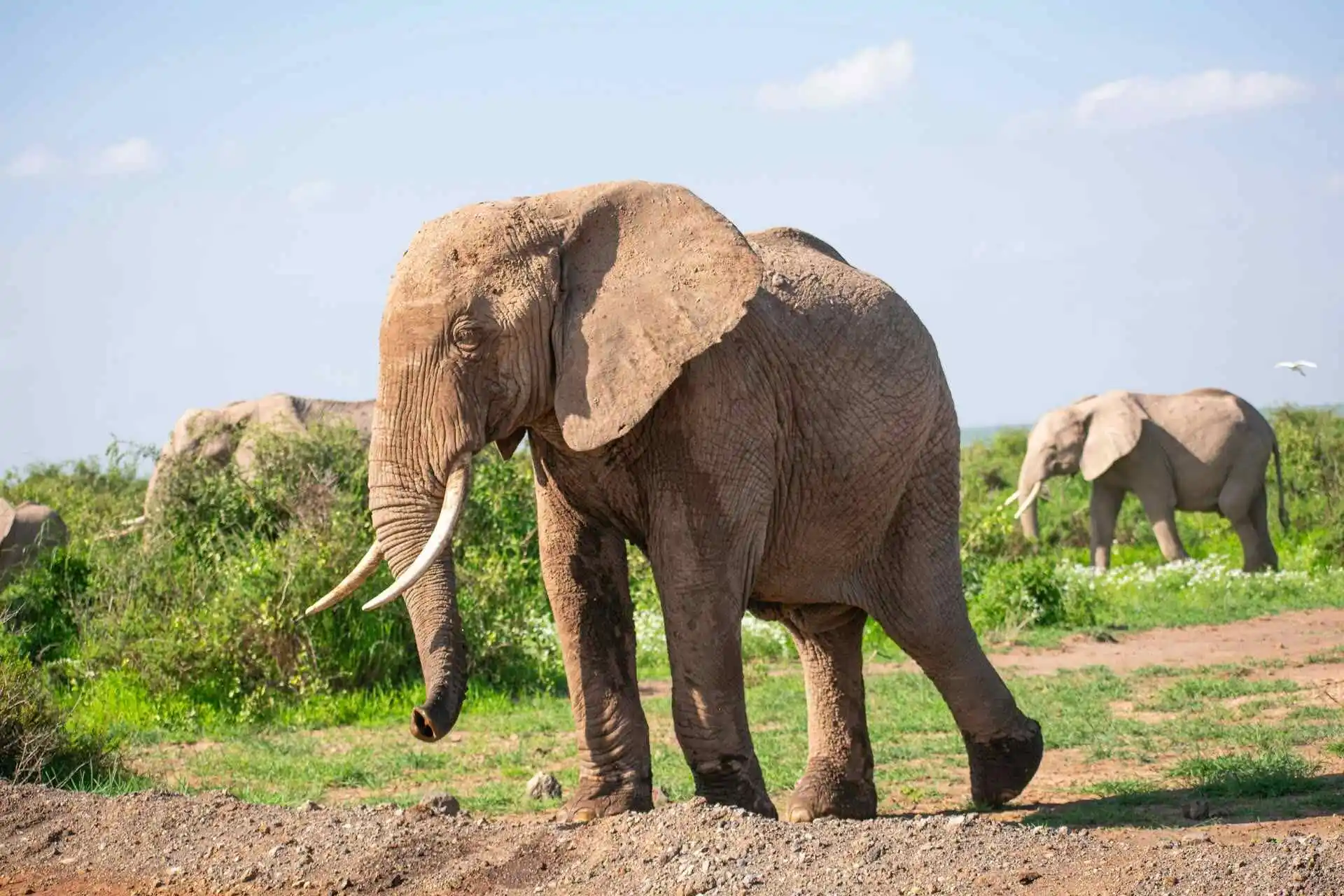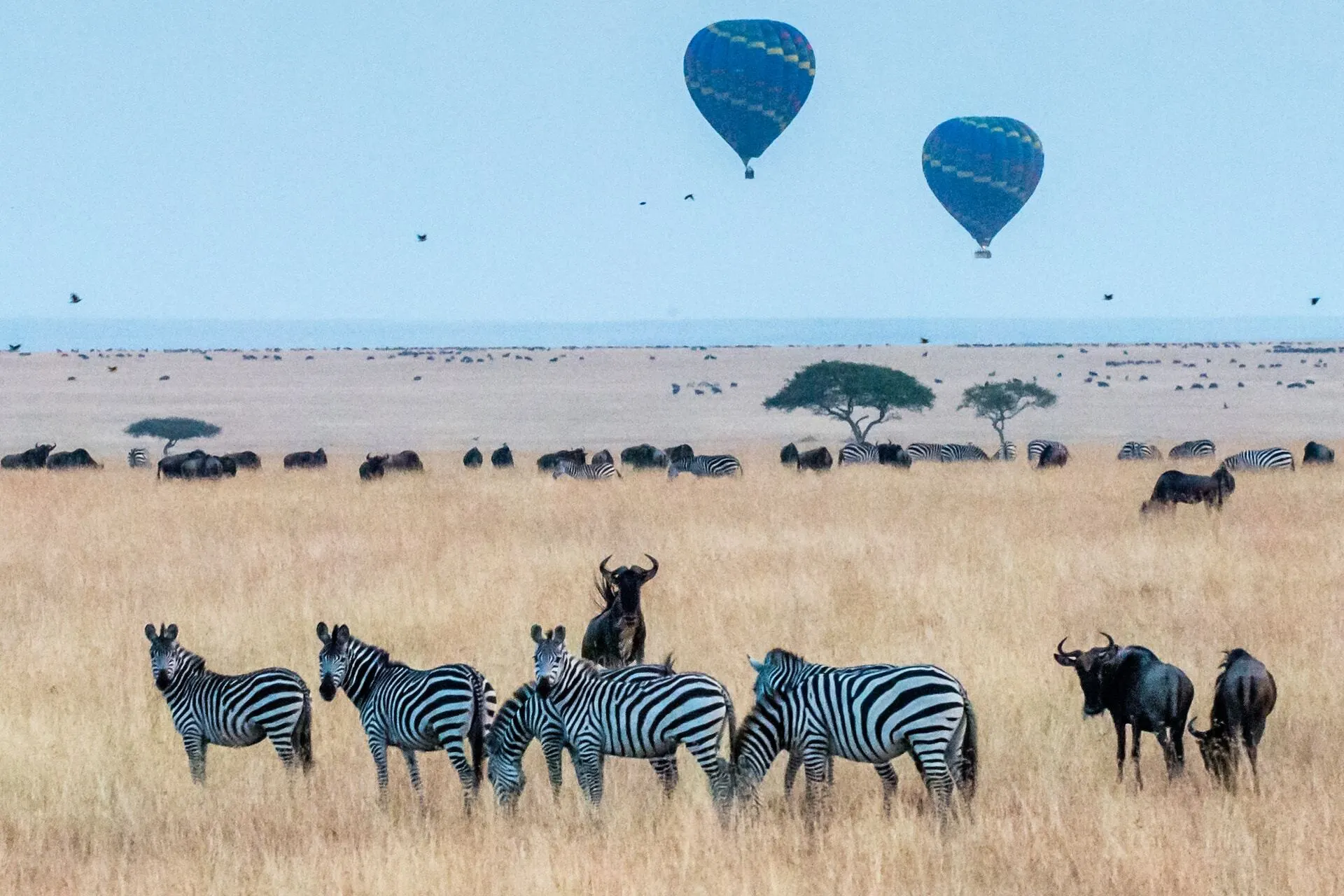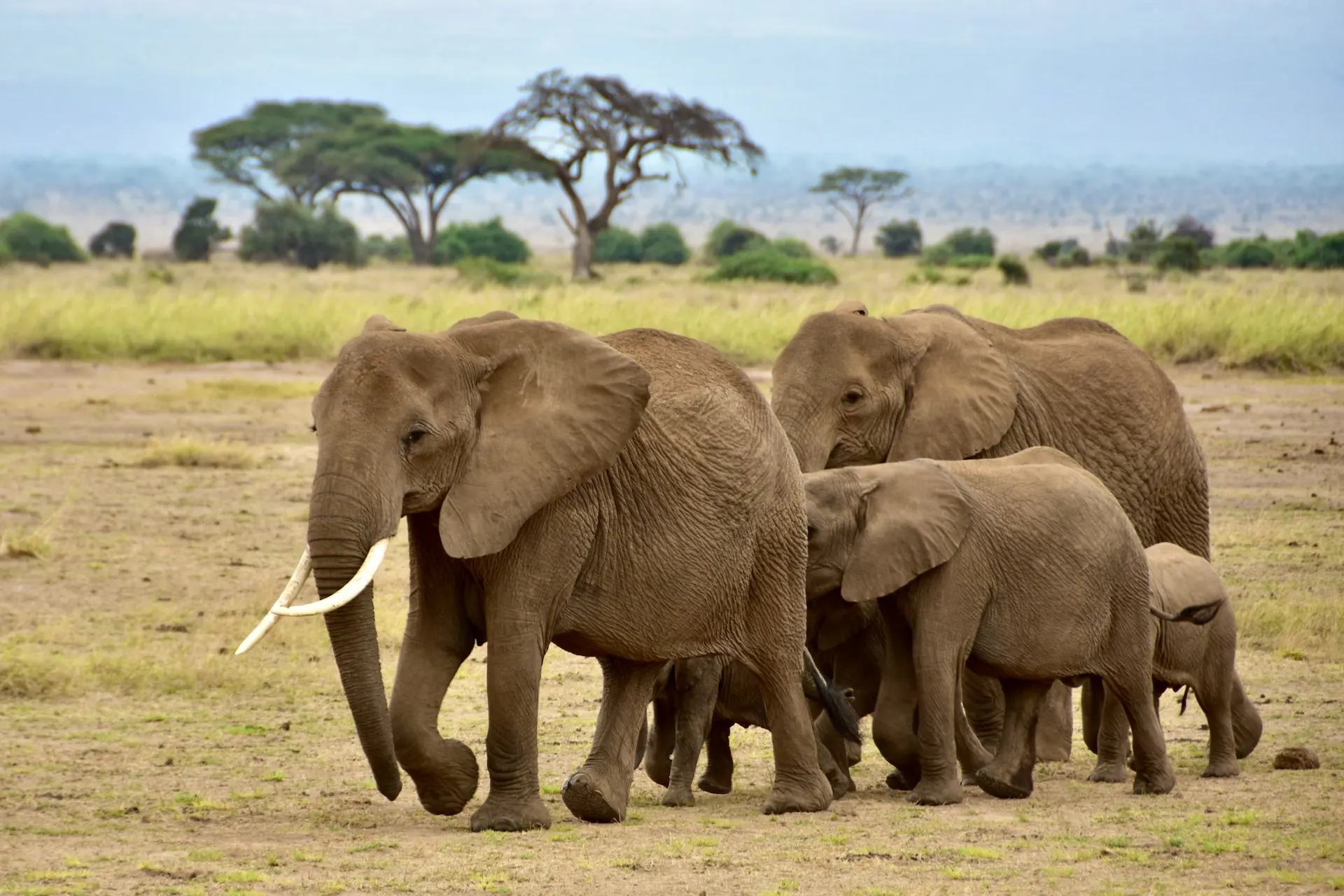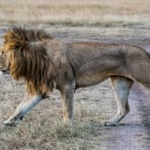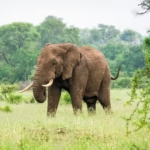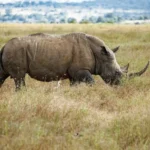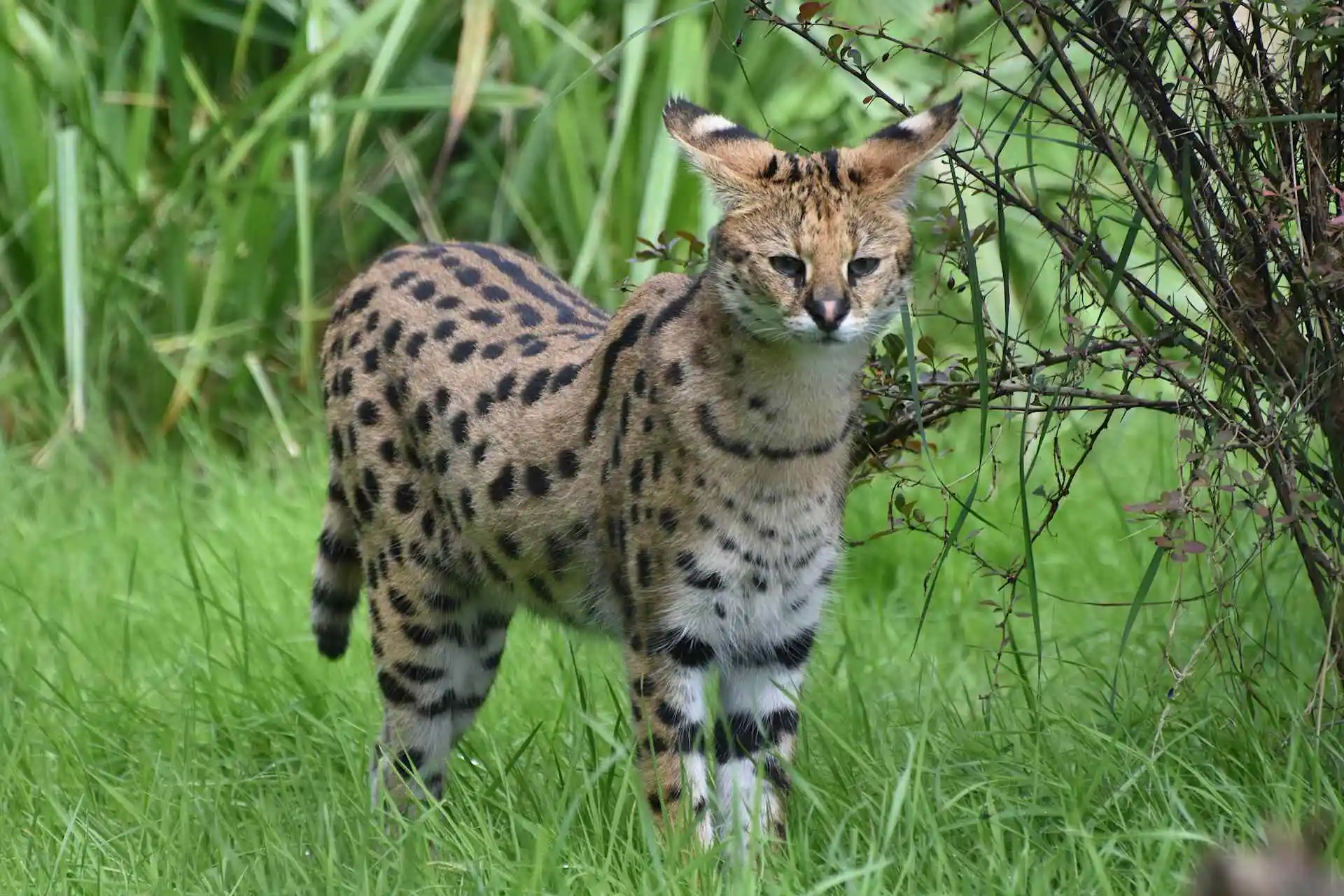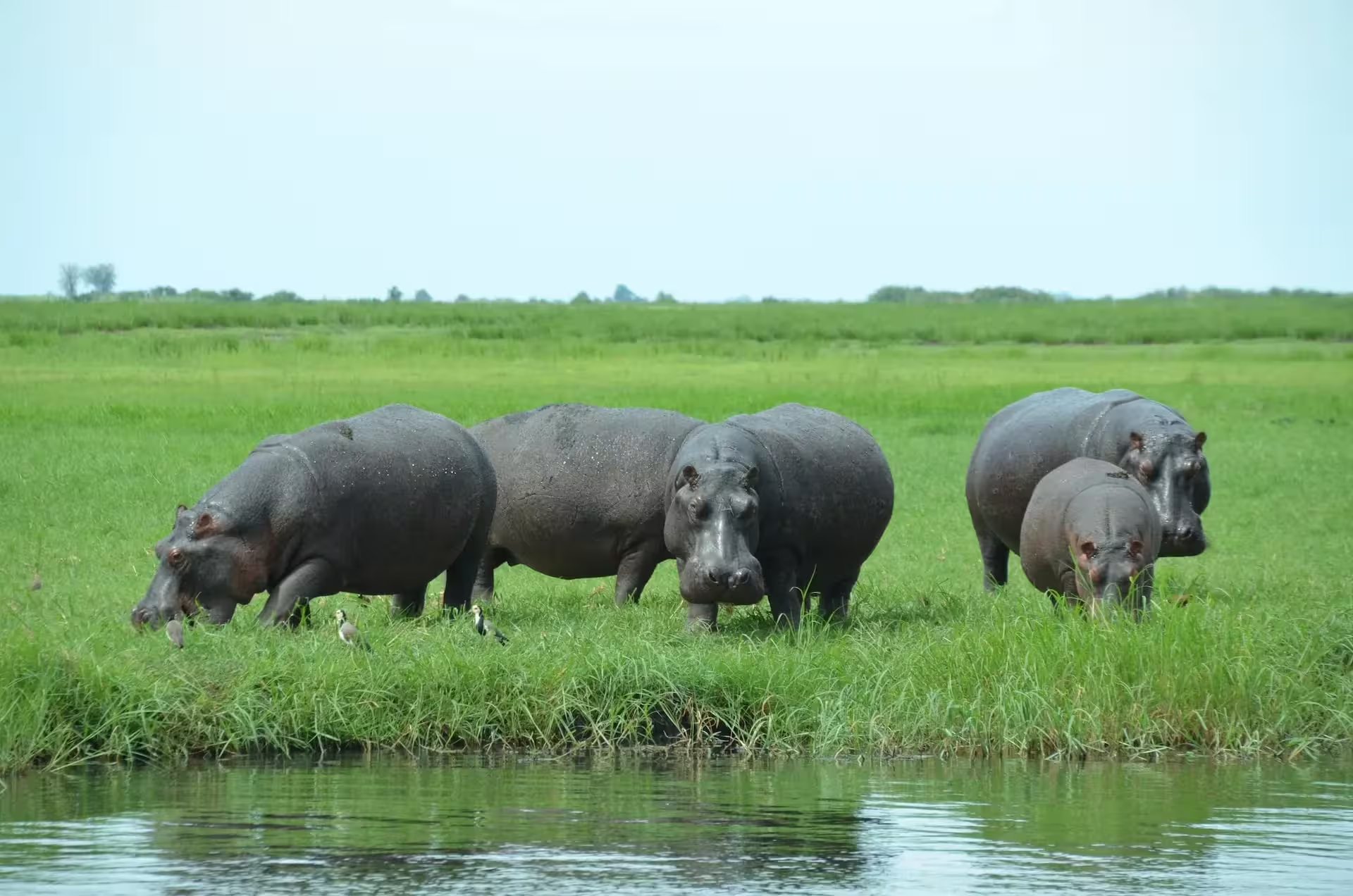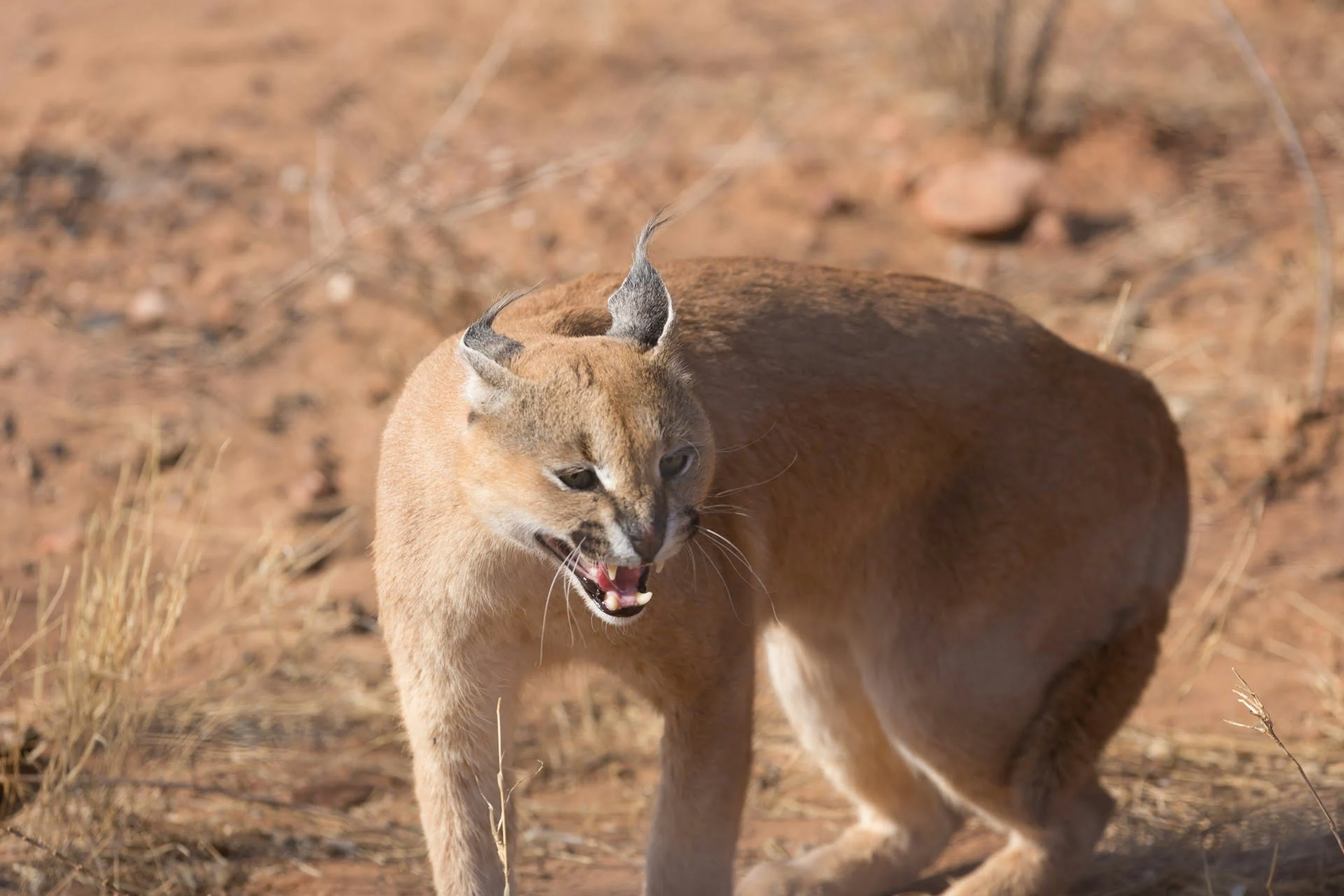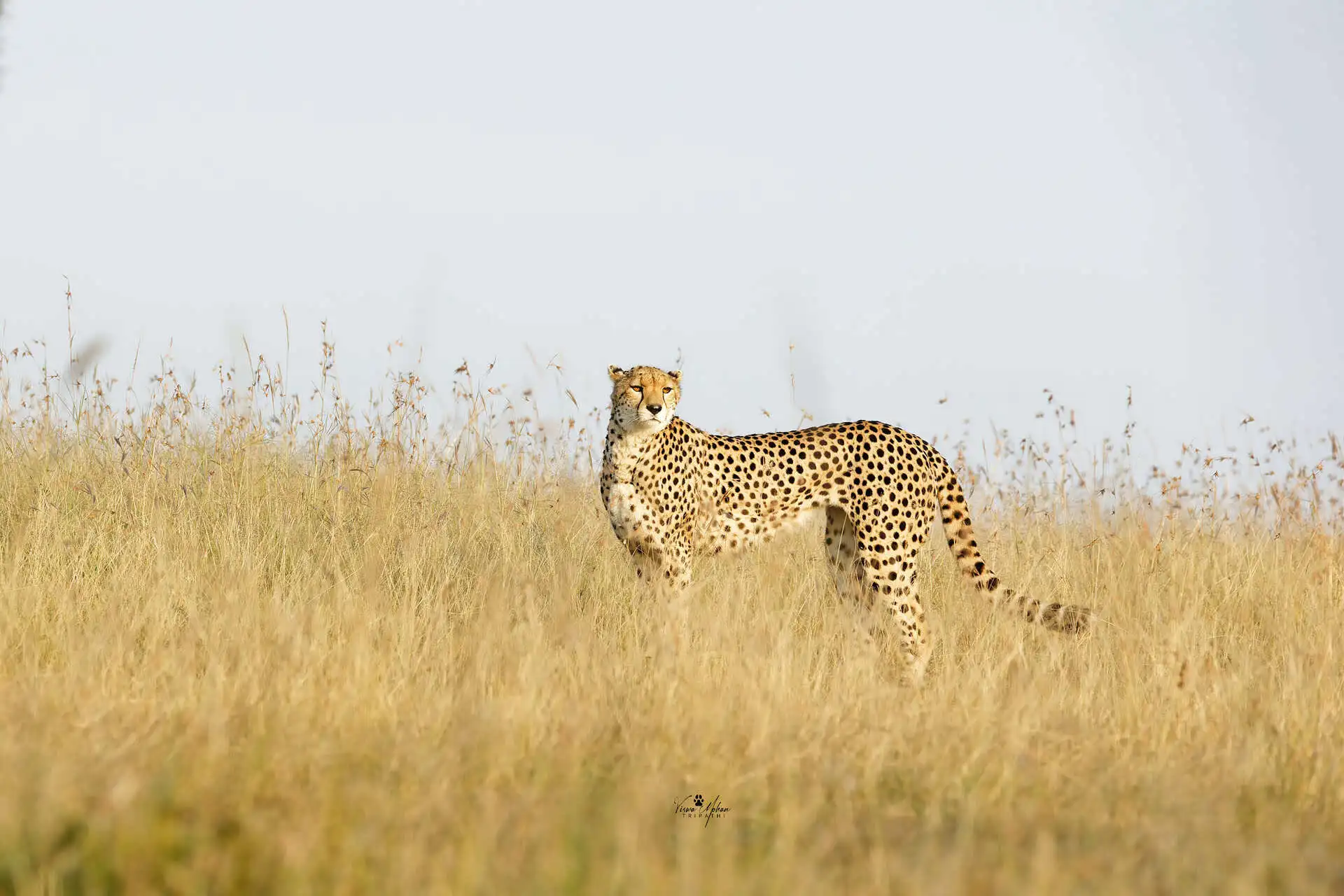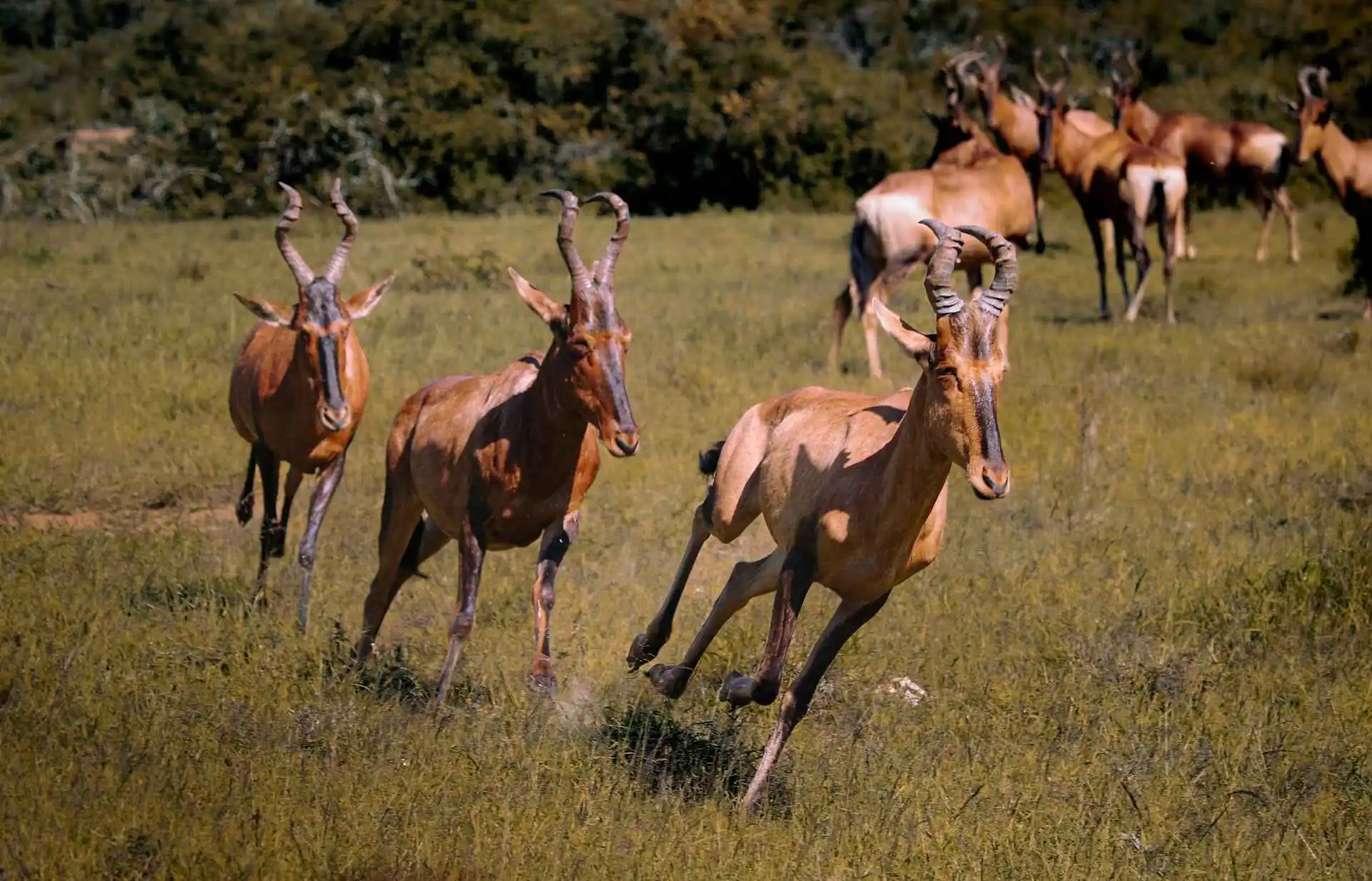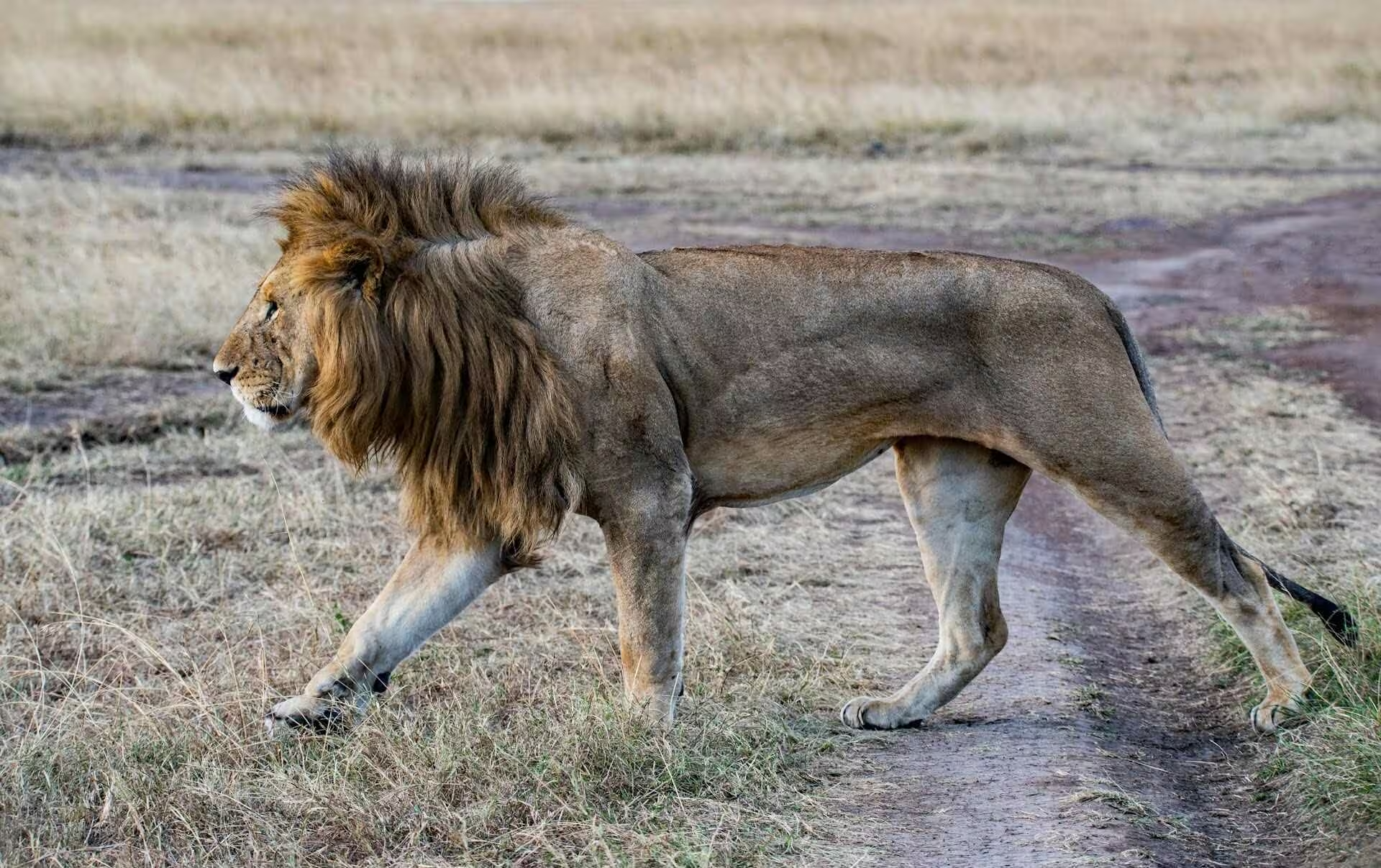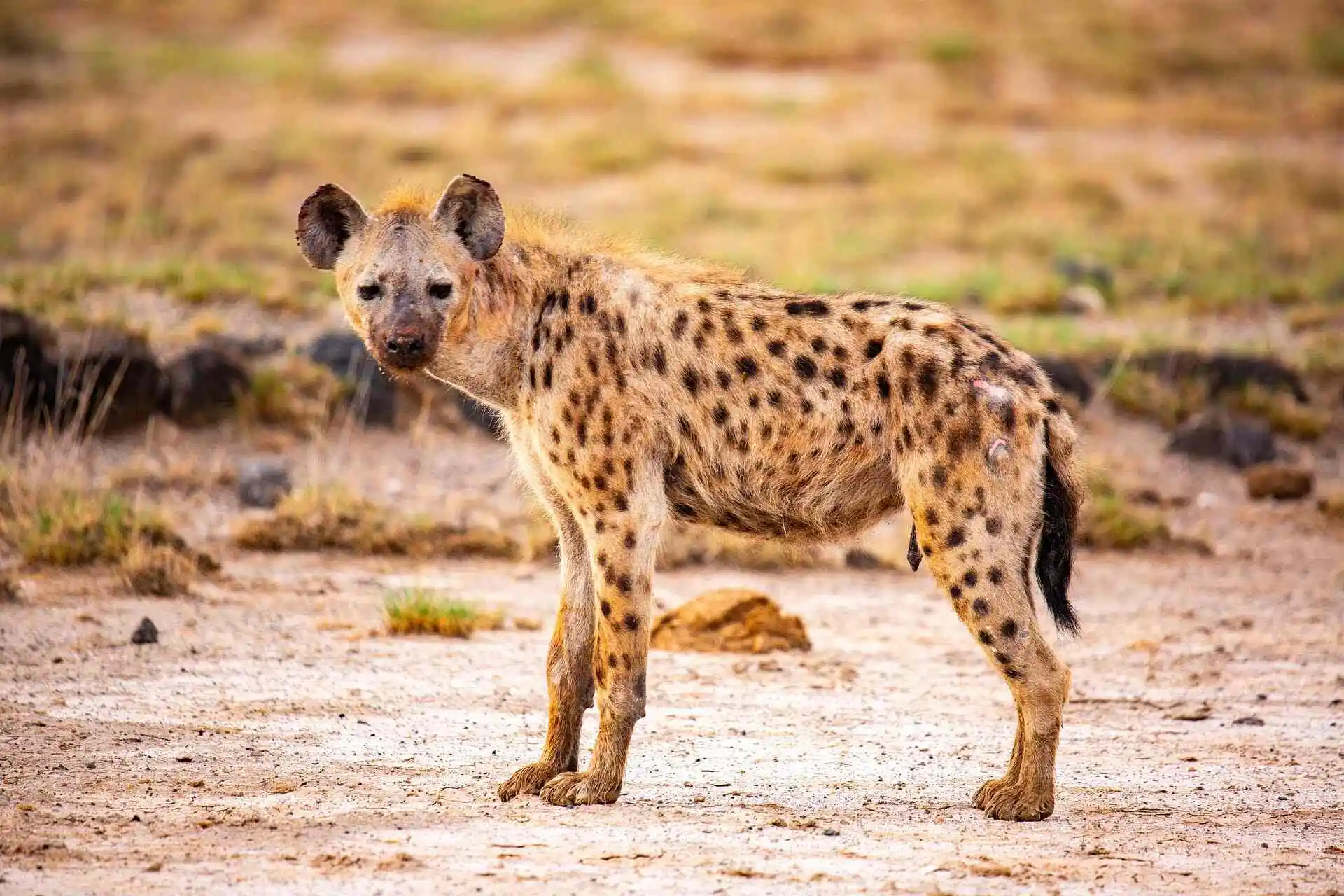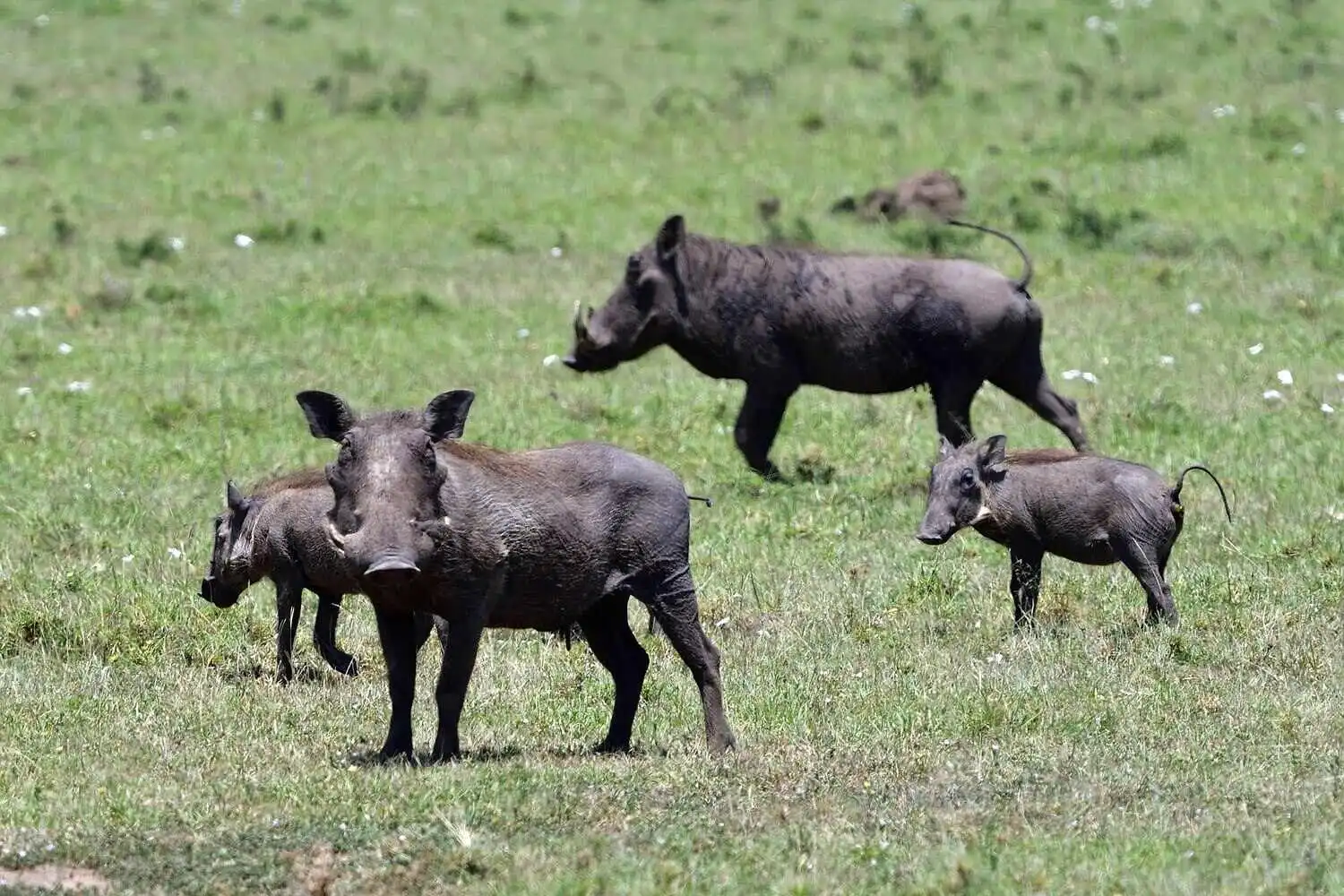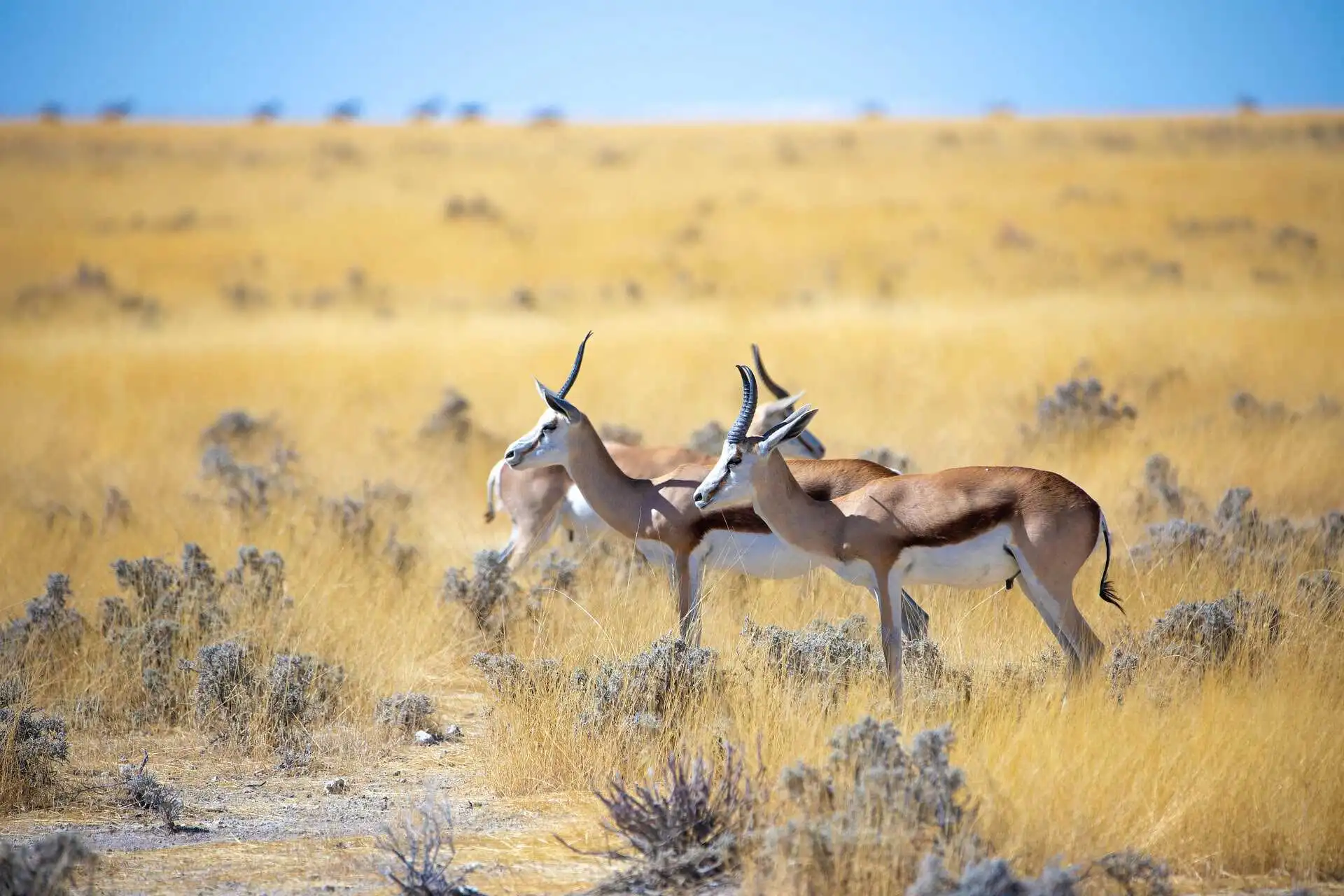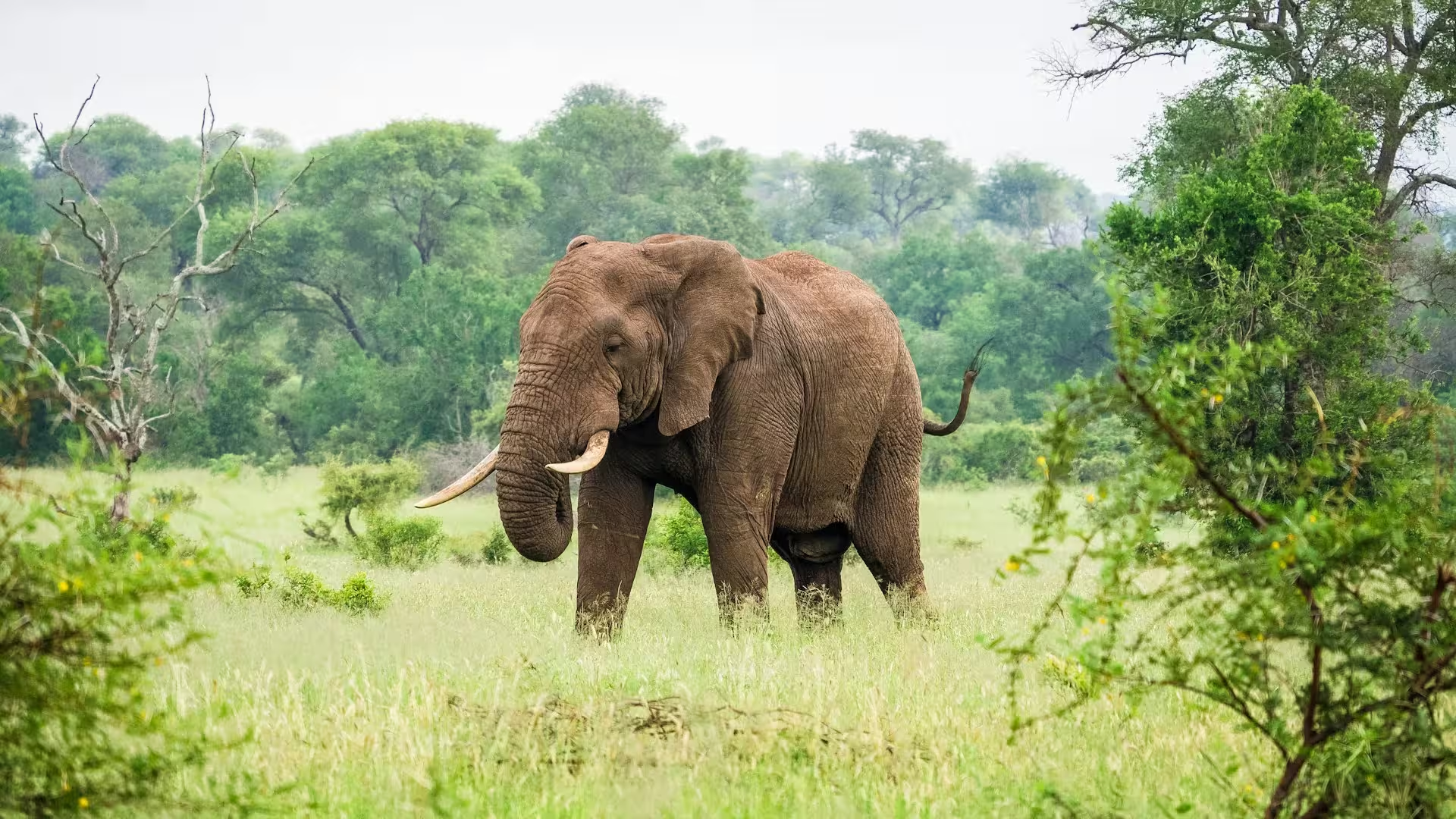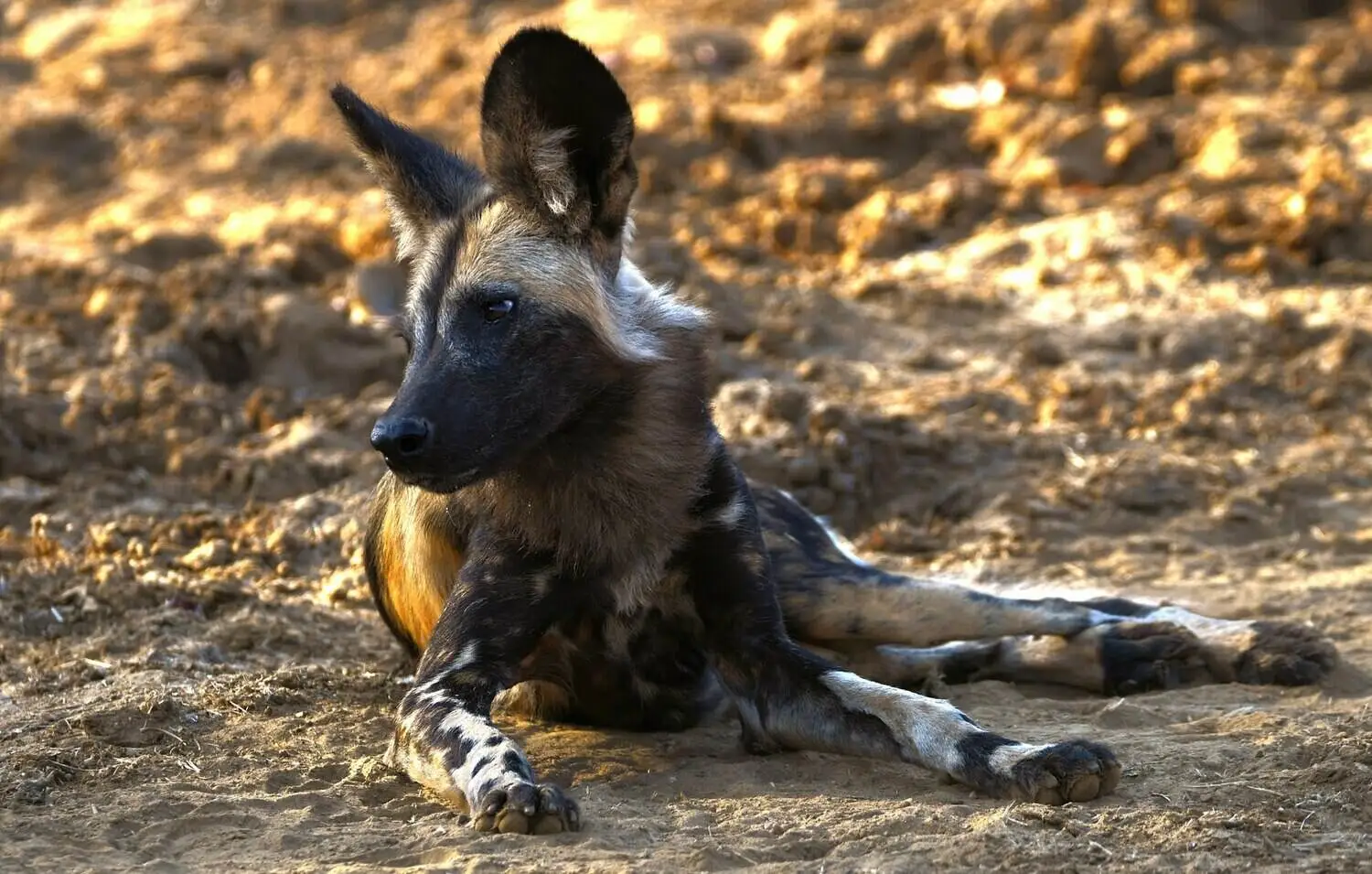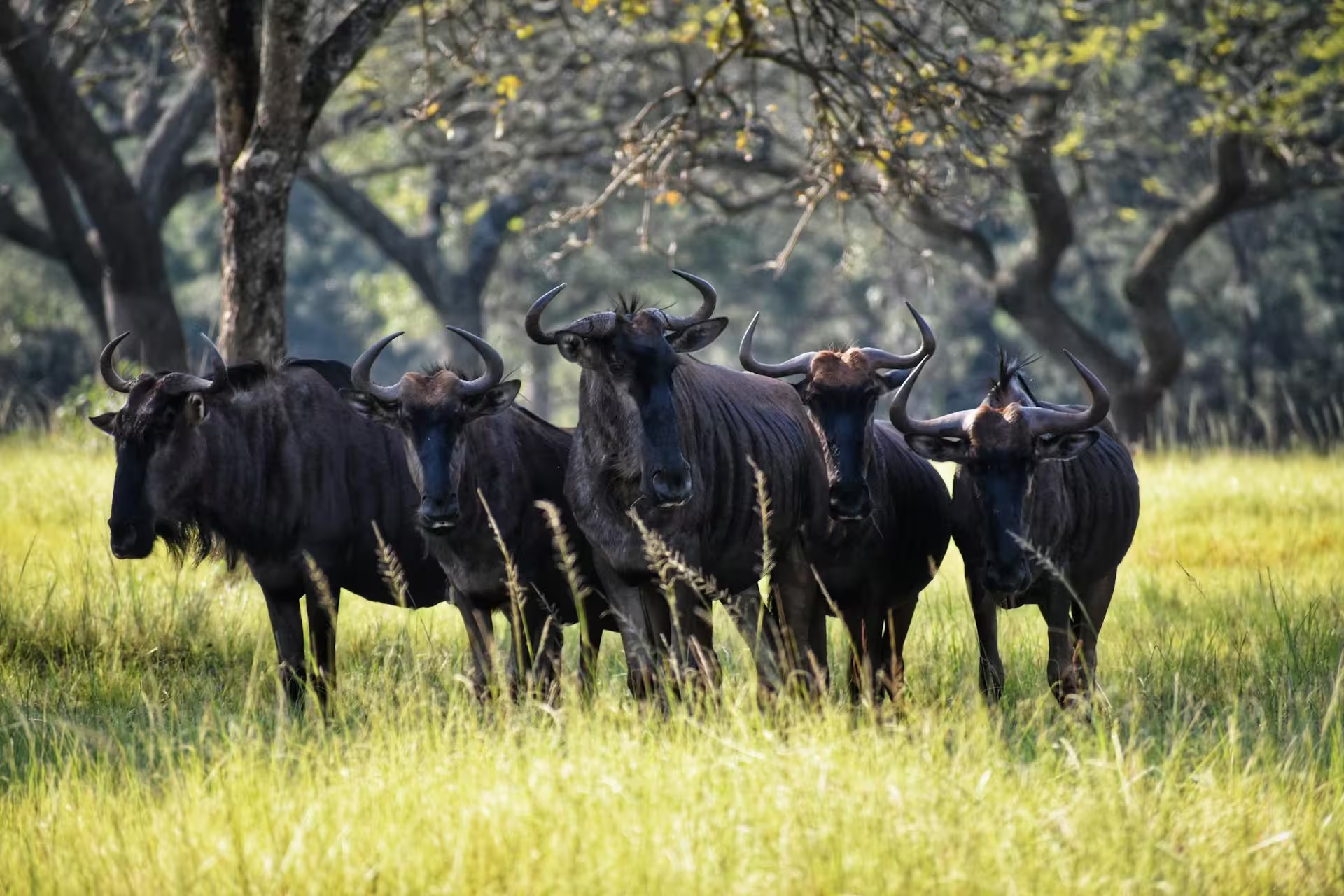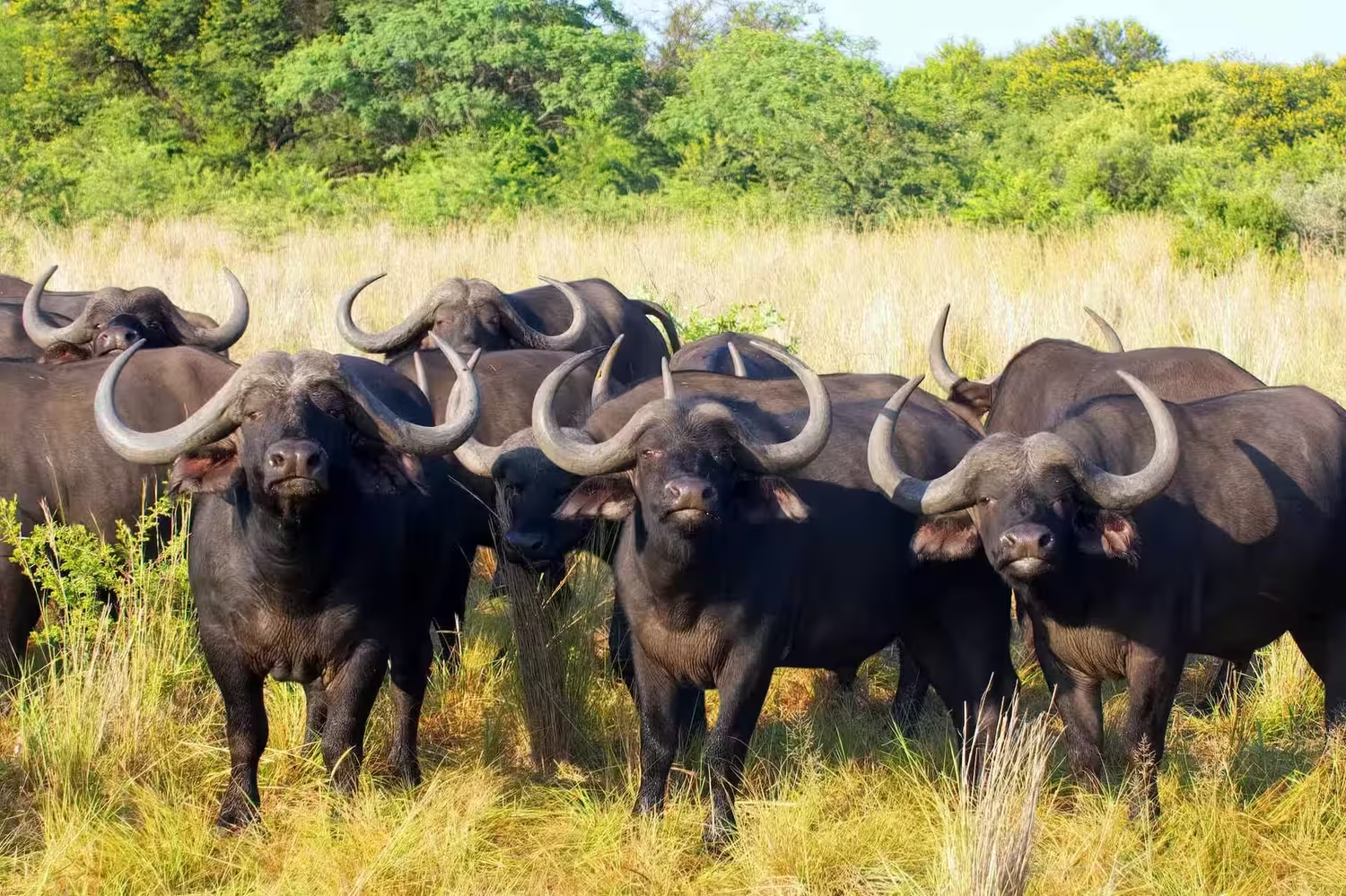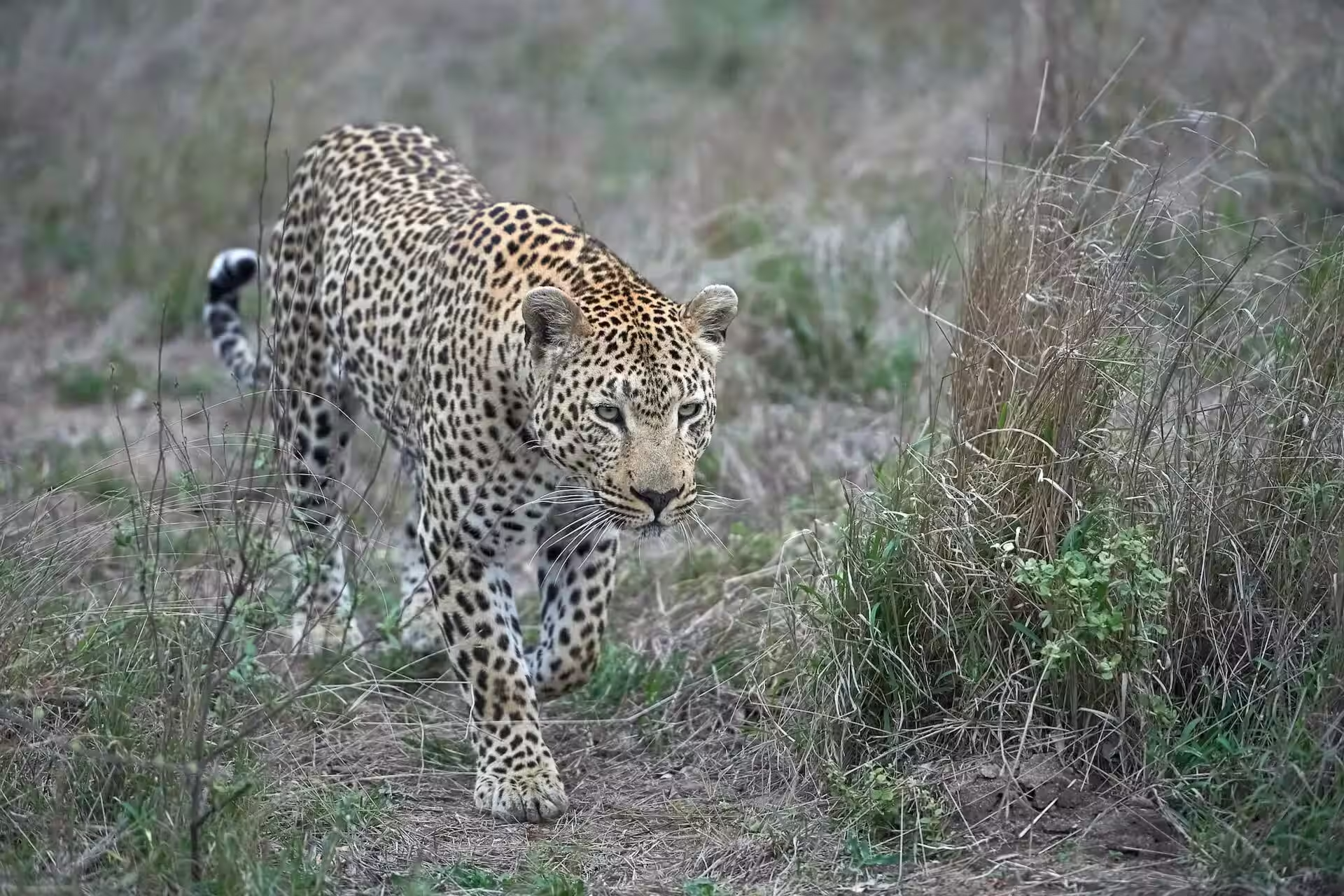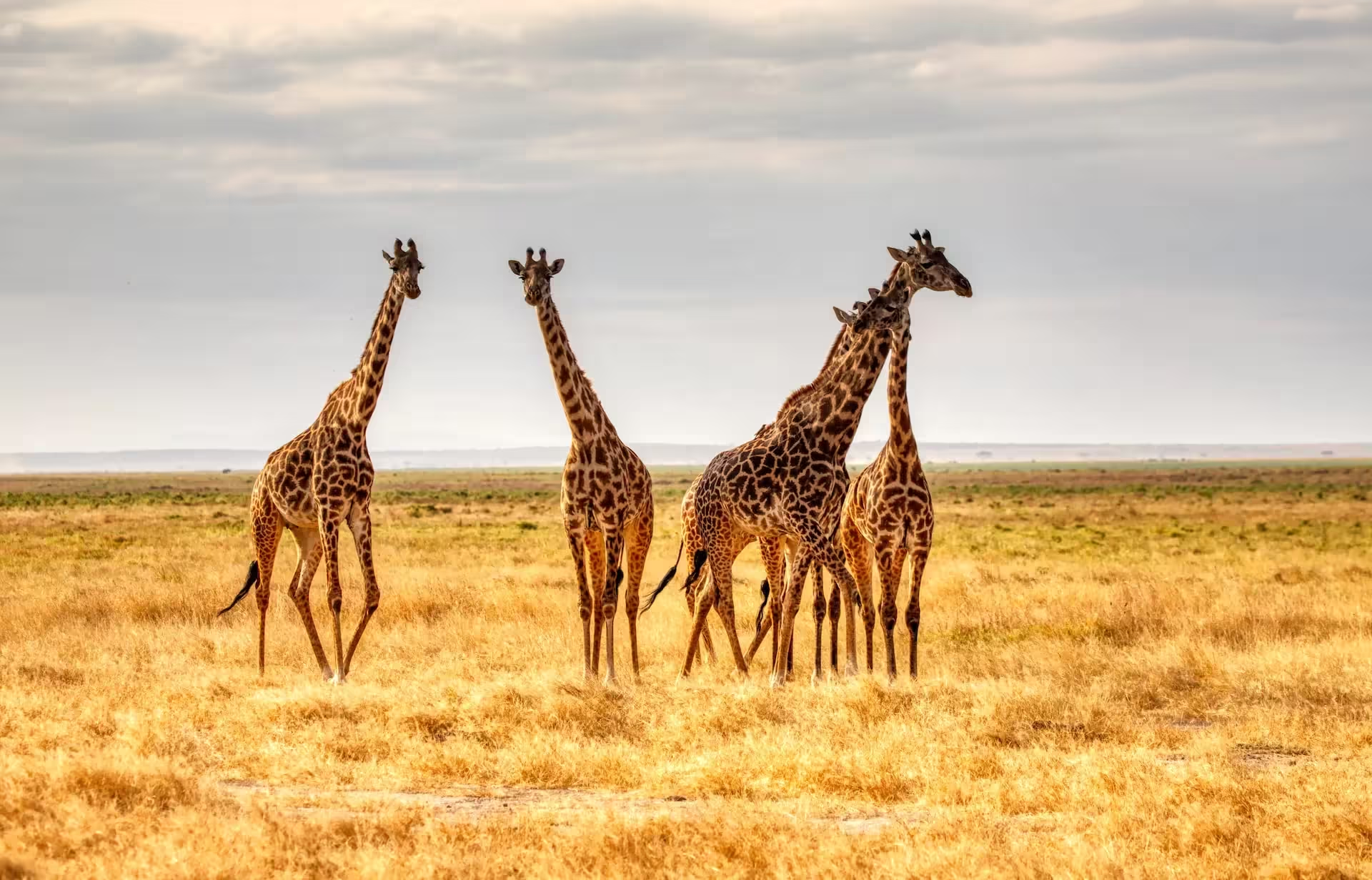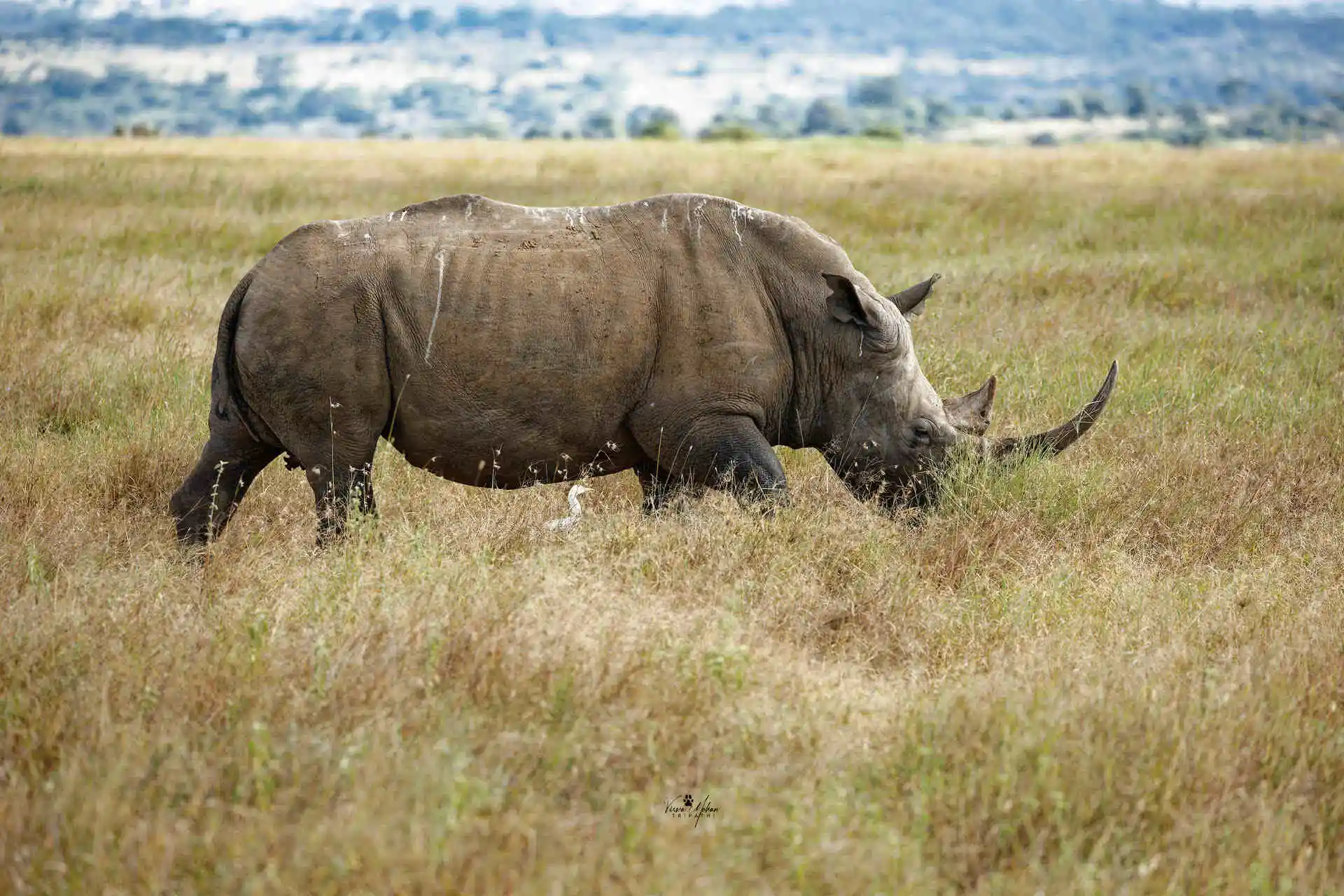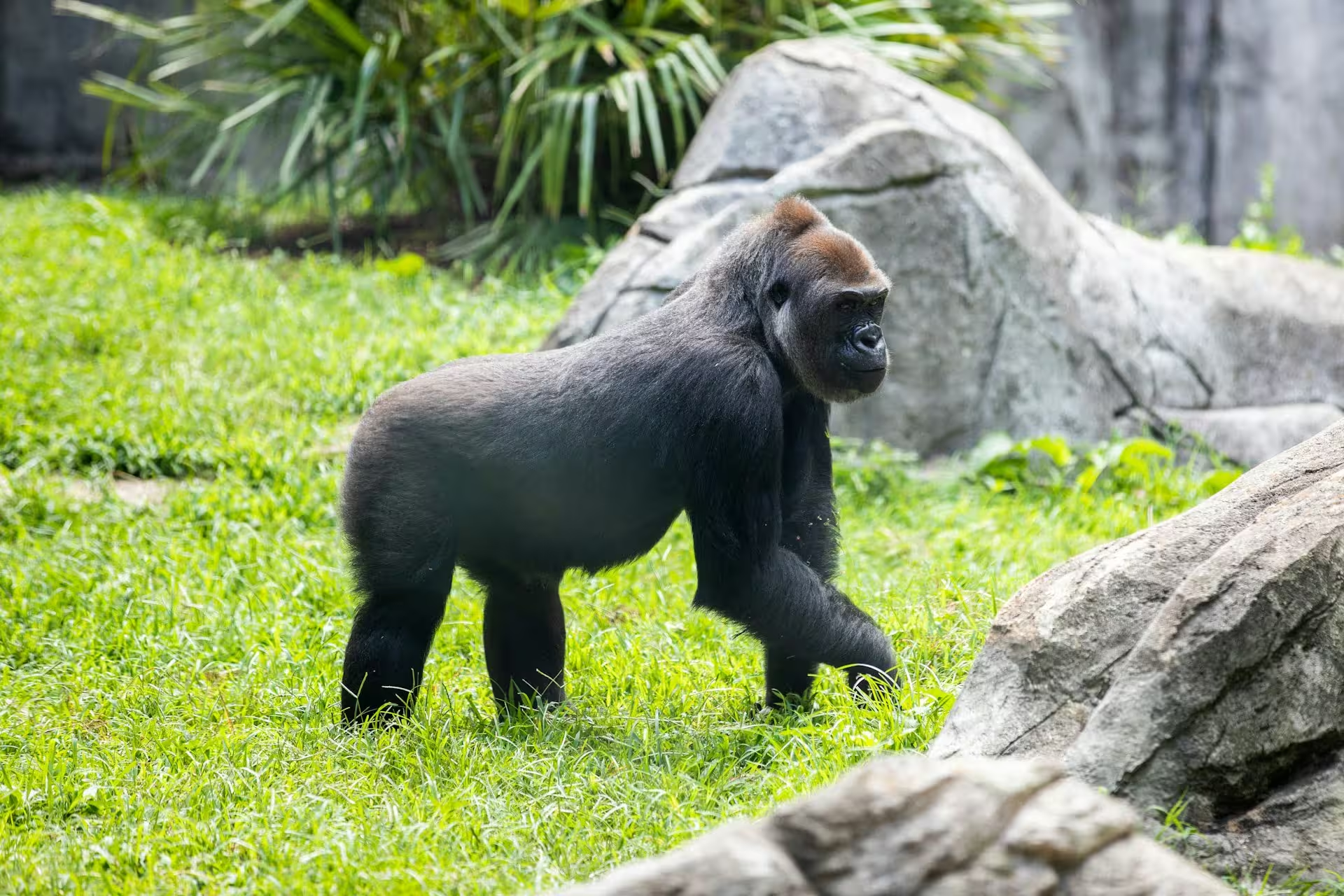How does African Elephant look like?
African elephant is the giant of the land, and spotting them is a real treat! They have a big, wrinkly body covered in gray or brown skin. Their legs are strong, and their feet are like big, flat cushions. What makes them really special is their long, flexible trunk, it’s like a multitool! They use it for breathing, smelling, lifting things, and even spraying water.
You can’t miss their fan-shaped ears, not only do they look cool, but they also help the elephants stay cool in the heat. And let’s talk about those impressive tusks! They’re like long teeth sticking out from the upper jaw, and these heavyweights can grow as long as 10 feet and weigh up to a whopping 220 pounds. Elephants use their tusks for defense, digging, and even peeling bark off trees. That’s our elephant friend! They’ve got a unique and awesome look, making them stand out in the wild.
Key Characteristics Table
| Characteristic | Details |
|---|---|
| Life Span | 60–70 Years |
| Weight | Up to 6048 KG |
| Height | 2.4–3.9 Meters |
| Length | 2.5–7.1 Meters |
| Ear Size | Up to 1.2 Meters |
| Trunk Size | Up to 2 Meters |
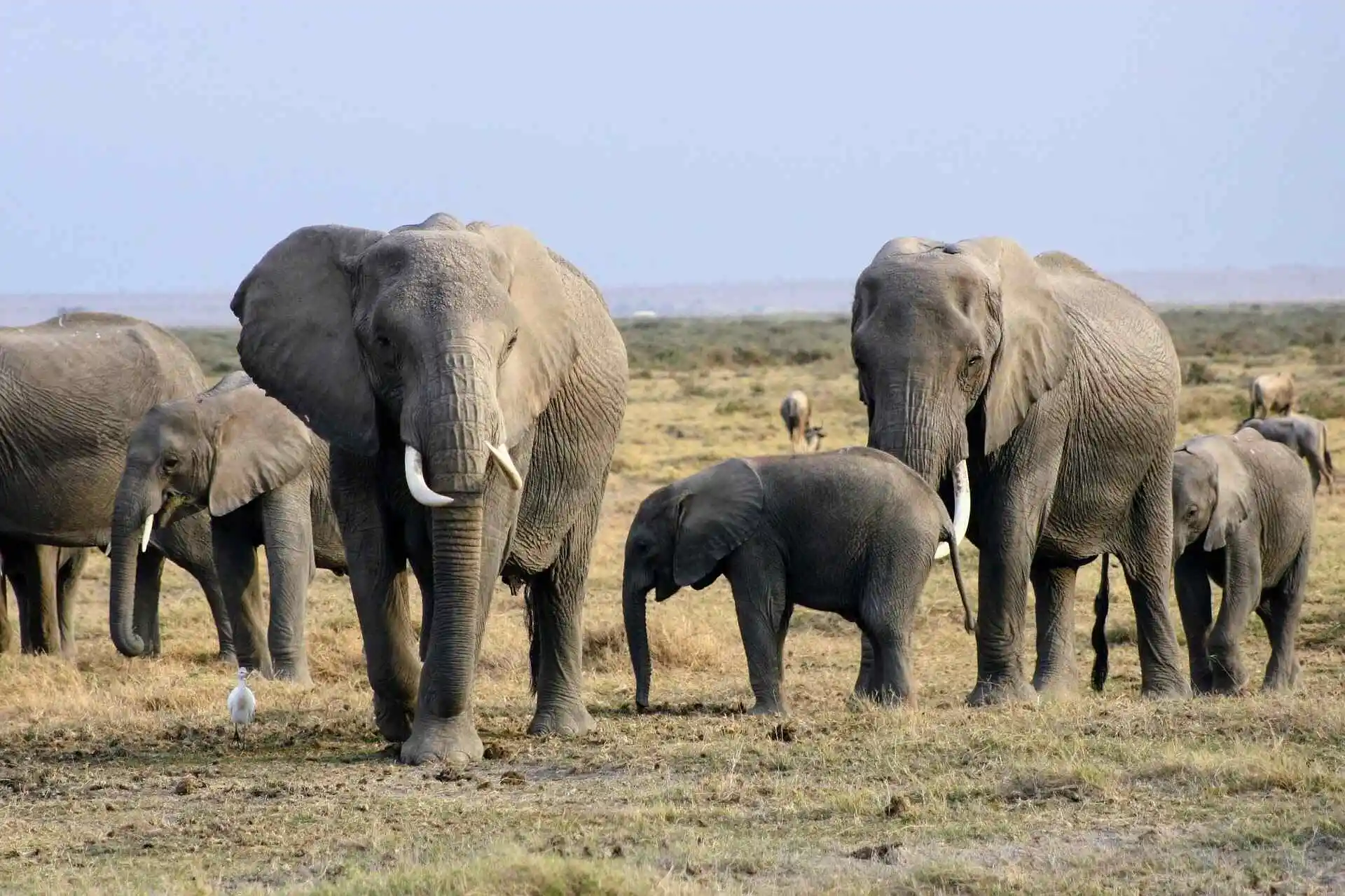
Herd of African Elephant in Amboseli
What African Elephant like to eat ?
African elephants are true food enthusiasts, embracing a diverse vegetarian diet that spans grasses, leaves, fruits, and even bark. As herbivores, these megaherbivores are famous for their hefty appetites, consuming a remarkable 330 pounds of food daily.
Adding a flavorful twist to their menu, elephants occasionally indulge in insects, small mammals, and even carrion (the posh term for dead animal flesh). Dietary preferences shift with age and gender – young elephants favor more milk and plants, while female elephants generally outeat their male counterparts.
But these elephants are more than just hearty eaters, they are like the gardeners of the African landscape. Beyond trimming the grass, they help spread seeds. It is like they have their own secret recipe for keeping the wild in balance! Nature’s real chefs.
Know the importance of Elephants in African culture
African elephants are revered symbols of strength and wisdom in the continent’s history and culture.
In ancient times, elephants held a divine status, especially in Egypt, where they were considered sacred animals. Depicted in hieroglyphics and worshipped as gods. In West Africa, elephants symbolized kingship, taking center stage in royal ceremonies and grand processions.
Beyond symbolism, elephants were practical assets, serving as transport and even playing a role in ancient African armies. Today, they are major tourist attractions, contributing significantly to the economies of African countries.
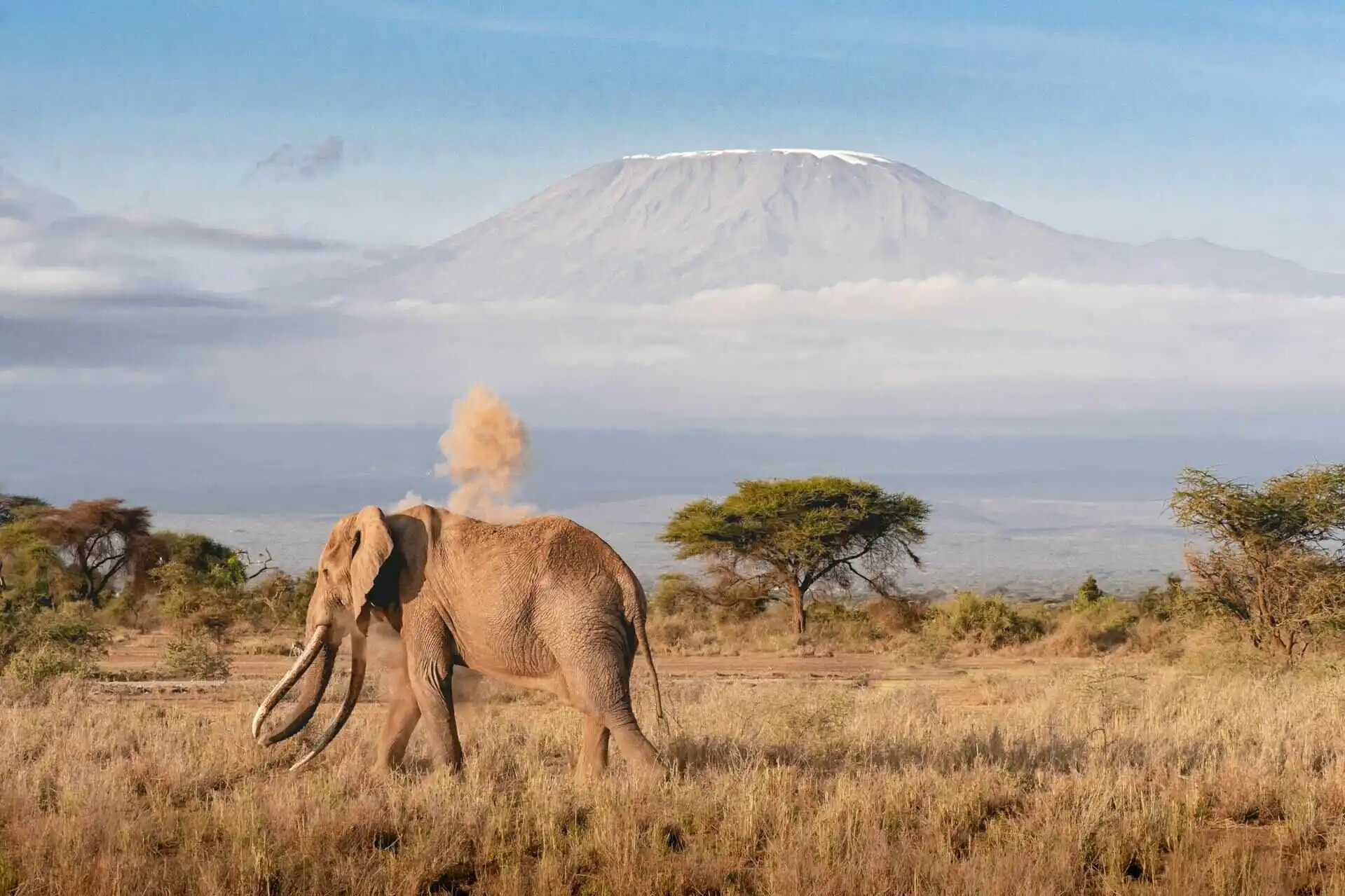
Elephant in Amboseli with Mount Kilimanjaro in the background
10 Fun Facts about African Elephants
- African elephants are the largest land animals on Earth, with males weighing up to 6,000 kg.
- Their large ears help regulate body temperature and resemble the shape of the African continent.
- An elephant’s trunk has over 40,000 muscles and is used for breathing, smelling, touching, grabbing, and trumpeting.
- They can smell water from several kilometers away – a vital survival skill in dry regions.
- Both male and female African elephants have tusks, which grow throughout their lives.
- Elephants use low-frequency rumbles to communicate over long distances, sometimes more than 10 km.
- They are highly social and live in matriarchal herds led by the oldest female.
- Elephants mourn their dead and show signs of grief, empathy, and memory.
- They can consume up to 150 kg of food and drink nearly 200 liters of water in a single day.
- African elephants are keystone species, meaning their presence supports entire ecosystems.
Difference between African Elephant and Indian Elephant
| Feature | African Elephant | Indian Elephant |
|---|---|---|
| Size | Larger, up to 13 feet tall and 13,000 pounds | Slightly smaller, up to 11 feet tall and 9,000 pounds |
| Ear | Large, fan-shaped, up to 1.2 meters (4 feet) wide | Smaller, rounded, only about 2 feet wide |
| Social Structure | Live in large family groups called herds, which can include up to 100 members | Also live in herds, but these herds are typically smaller, with only 20-30 members |
| Tusks | Larger, up to 10 feet long and weigh up to 100 pounds | Usually only about 4 feet long and weigh up to 40 pounds |
| Conservation Status | Endangered | Endangered |
| Habitat | Savannas, grasslands, and forests | Primarily in forests, although they may also be found in grasslands and savannas |
| Genetic Differences | African elephants are divided into two main subspecies: the savanna elephant (Loxodonta africana africana) and the forest elephant (Loxodonta africana cyclotis). | Indian elephants belong to a single subspecies: the Indian elephant (Elephas maximus indicus). |
Top African Elephant Safari Tours
Join Elephant Safaris for an exciting adventure! Get up close to African elephants with expert guides. Thrilling trips, unforgettable memories, join us for an exciting safari experience!

